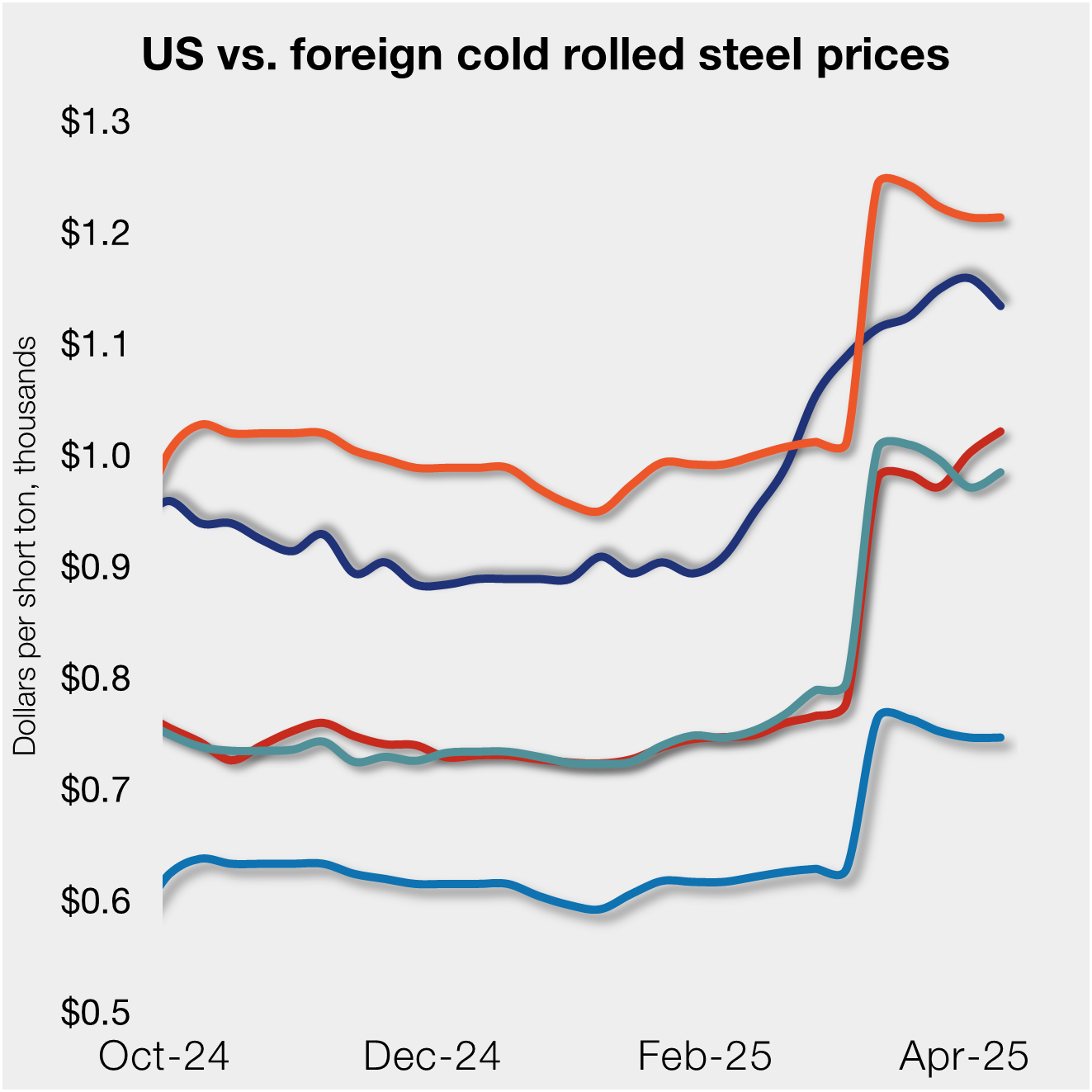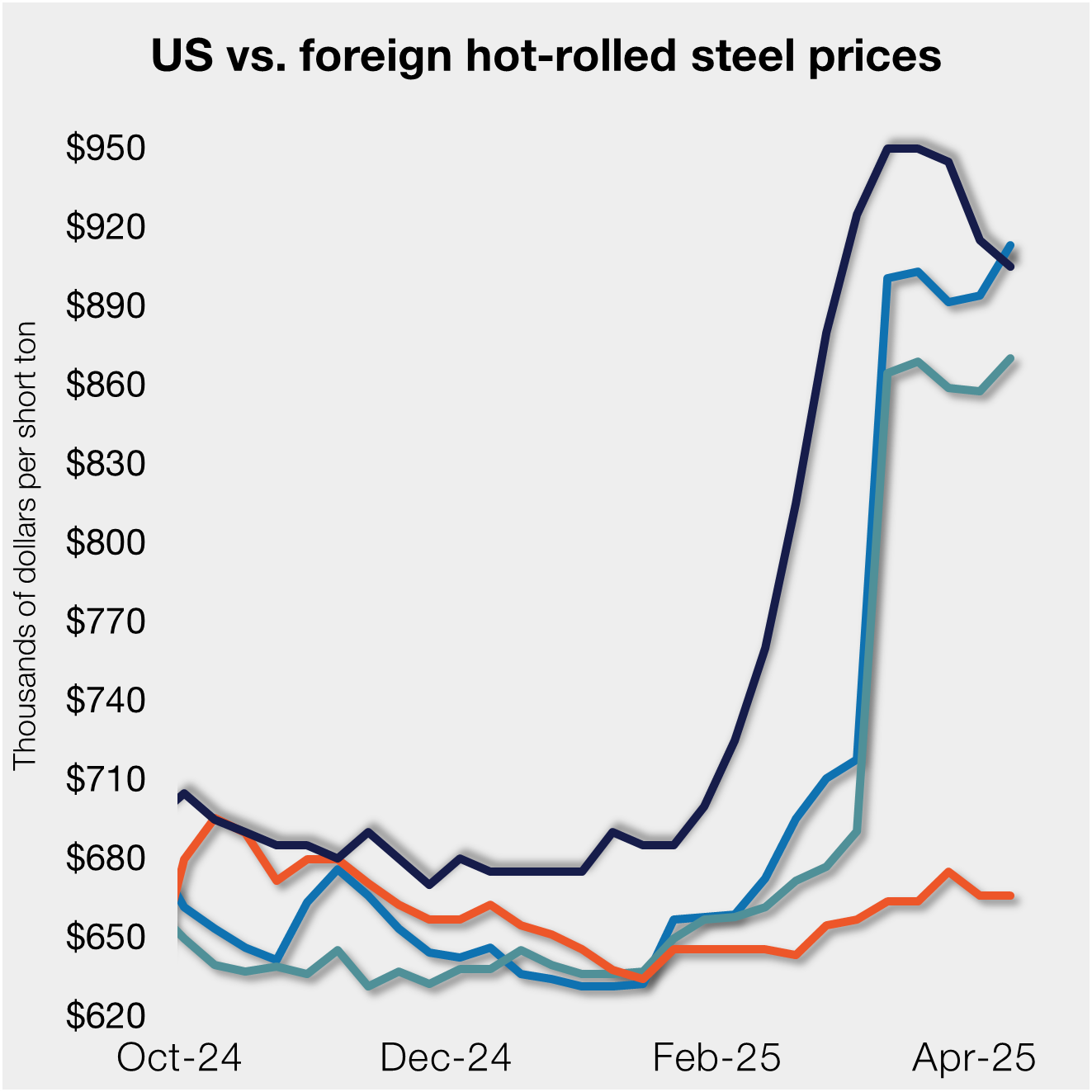Steel Products

Leibowitz on Trade: More or Fewer Tariffs in 2019?
Written by John Packard
December 31, 2018
The following was submitted by trade attorney Lewis Leibowitz. His contact information is at the end of the article.
As we approach the new year, I have been reflecting on the next few months and what may come in 2019. One of my history professors in college often said, “change is the only permanency.” I think he was on to something.
So, what changes are likely in 2019 on the trade front? More tariffs or fewer tariffs?
We could see more Section 232 tariffs in the auto and uranium sectors, with Commerce reports due under the law early in the New Year. The Korean legislature approved the new U.S.-Korea free trade agreement 12 days ago, and it’s clear that South Korea expects to be exempt from any U.S. tariffs or quotas that may come under Section 232. The U.S. Congress arguably does not need to approve the U.S.-Korea agreement signed last September, because all the concessions appear to be on the Korean side.
U.S.-Japan trade talks will commence in 2019. The Office of the U.S. Trade Representative released negotiating objectives in December. The objectives were not specific to any industry or sector. USTR emphasized improved market access into Japan; Japan will clearly want to eliminate as many uncertainties as possible. Japan is another country that will expect an exemption from auto and auto parts tariffs or quotas as a result of the Section 232 investigation. The European Union will also want to lock in a concession from President Trump last summer that seemed to exempt European auto imports from Section 232 restrictions.
All in all, if all these expectations play out as “expected,” there will be, as another of my professors used to say, “more hole than doughnut” in any auto sector trade restrictions under Section 232. But the “expected” has often not been the outcome. The first quarter could be interesting indeed in autos.
As for “fewer” tariffs, two areas to watch are court proceedings challenging Section 232 and the tariffs on Turkey. The Court of International Trade will likely rule on the constitutionality of Section 232 during the first half of 2019. If the three-judge panel rules against constitutionality, an appeal to the U.S. Supreme Court is expected, with a decision possible in 2019, but more probably in 2020. Turkey is the only country that currently is subject to 50 percent tariffs on steel exports. A recent tweet from President Trump noted that he and Turkish President Erdogan discussed “heavily expanded trade” in a conversation two weeks ago. I have seen no elaboration of what “heavily expanded trade” might mean as of now, but next week we may see some more details.
Negotiations to end the tariffs on steel and aluminum from Canada and Mexico will continue in 2019. U.S. ratification of the new USMCA is by no means assured. Perhaps the administration will try to link an exemption for Canada and Mexico to congressional ratification of the new agreement. That could improve prospects for congressional approval that, according to most observers, appear doubtful.
I hope you have a happy New Year and that all your trade dreams come true!
Lewis Leibowitz
The Law Office of Lewis E. Leibowitz
1400 16th Street, N.W.
Suite 350
Washington, D.C. 20036
Phone: (202) 776-1142
Fax: (202) 861-2924
Cell: (202) 250-1551

John Packard
Read more from John PackardLatest in Steel Products

SMU flat-rolled market survey results now available
SMU’s latest steel buyers market survey results are now available on our website to all premium members. After logging in at steelmarketupdate.com, visit the pricing and analysis tab and look under the “survey results” section for “latest survey results.” Past survey results are also available under that selection. If you need help accessing the survey results, or if […]

CRU tariff webinar replay now available
CRU’s latest webinar replay on how Trump’s tariffs affect the global steel market is now available on our website to all members. After logging in at steelmarketupdate.com, visit the community tab and look under the “previous webinars” section of the dropdown menu. You’ll find not only this special CRU webinar but also all past Community […]

US, offshore CRC prices diverge
US cold-rolled (CR) coil prices declined this week, slipping for the first time since early February. Most offshore markets deviated, moving higher this week.

Construction growth slowed in March on tariff woes: Dodge
The decline comes after reaching a record high in January to kickstart the year.

Return of S232 zapped gap between US and EU HR prices, Asian HR remains cheaper
Domestic hot-rolled (HR) coil prices declined this week for a third straight week. Most offshore markets bucked the trend and gained ground. Uncertainty in the US market around tariffs, especially after “Liberation Day,” caused US prices to slip as buyers moved to the sidelines. It’s unclear to date whether the 90-day pause on the more […]
